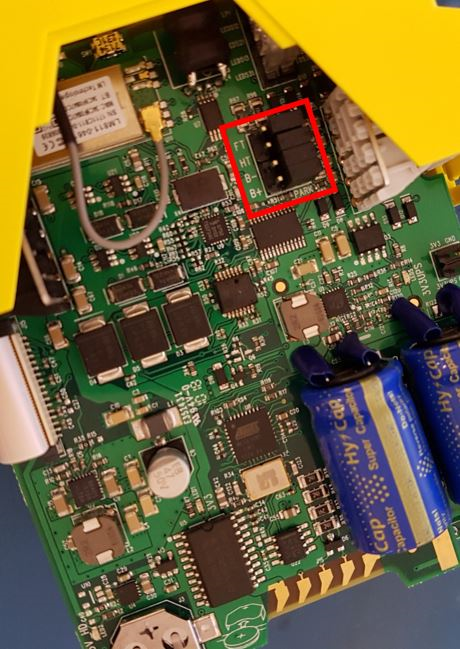FAQs
Serial Port Jumpers
The BB-400 features a fully configurable serial port, capable of being set to use any of the serial communication protocols ( RS232, RS422 and RS485 ). In addition to this, the serial port is also capable of accepting many of the most common baud rates, the minimum being 300 and the maximum 921,600.
Furthermore, the serial port has 4 jumpers associated to it located on the inside of the case. ( You can locate them by looking directly behind the serial port on the inside of the device ). Each jumper has a role in determining how the serial port is configured and ultimately how it operates; labelled as FT, HT, B- and B+, these termination and biasing resistors can be set to customize the port as the user wants it.
| BB-400 Serial Port Jumpers |
|---|
 |
What does FT, HT, B- and B+ mean?
As shown on the diagram above, the BB-400’s serial port jumpers are labelled with the corresponding setting, by moving to the active state/position you can alter how the device operates. Each jumper is outlined below.
FT
Full Termination (FT) or more commonly referred to as Full-Duplex, is a standard of serial communication by where data transmission can occur bi-directionally (more than 2 directions simultaneously). The Full Duplex feature can be implemented on 2 configurations of the serial terminal, either as RS232 or RS422, thus allowing for a broad range of configuration.
HT
Half Termination (HT) or more commonly referred to as Half-Duplex, is the other standard of serial communication, however, data can only be transmitted in a single direction at a time. Unlike Full-Duplex, only 1 device can transmit data at a time and all others must listen, this is because there is only 1 communication channel available between the connected devices, if both where able to transmit at the same time data would collide and cause issues.
While RS232 and RS422 are both capable of full-duplex communication, they can be set to only use half duplex. RS485, however, is only capable of half-duplex communication.
B- & B+
The final 2 jumpers on the BB-400 are used to configure the biasing resistors for the RS485 communication channel. They play an integral role in ensuring that the serial communication, in particular the un-shielded twisted pair are electrically biased to a controlled voltage while the device is in RS485 mode. RS485 and un-shielded twisted pair are notorious for experiencing interference when the line isn’t being driven (when the line doesn’t have any data passing through it) and quite commonly experiences abnormal data readings which are a result of the interference.
The biasing resistors ensure a constant voltage is sent into the line when data isn’t being transmitted, this prevents floating voltages and background interference (noise) from causing false data readings.
